|
| |
Family Cicadellidae, Subfamily Tartessinae
- This page contains pictures and information about Brown Leafhoppers that we found in the Brisbane area, Queensland, Australia.
-
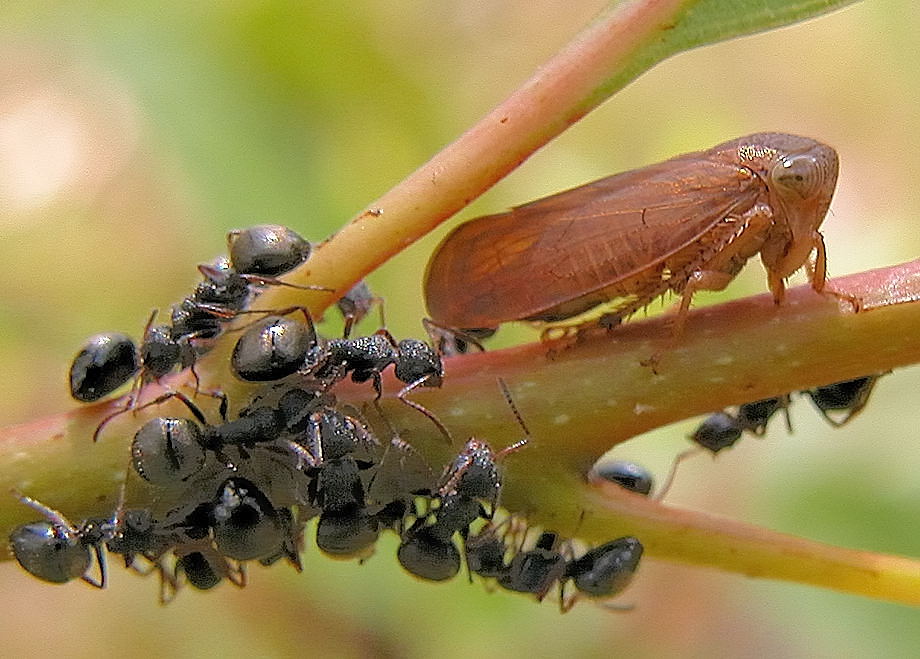 - Body length 10mm
-
- The leafhopper is medium in size and pale brown in colour.
-
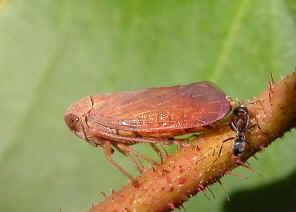 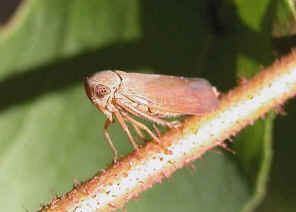
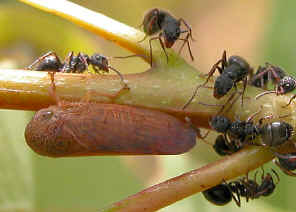 -
- This Leafhopper is common on young tree stems in Brisbane Eucalyptus
forest. They are attended by different species of ants.
-
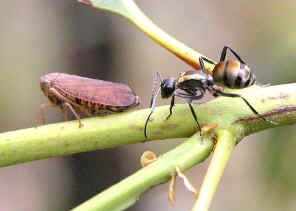 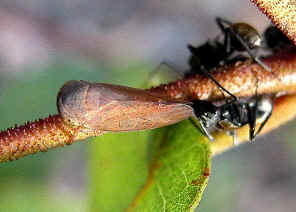
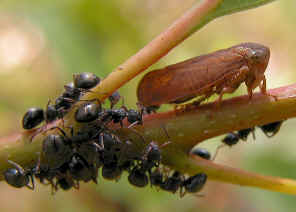 -
- The ants come for their honey dew. The treehoppers suck the plant juice.
Within the juice, there are water and sugar more than the leafhoppers need.
They are excreted as honeydew.
-
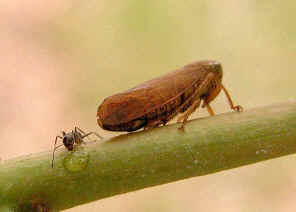 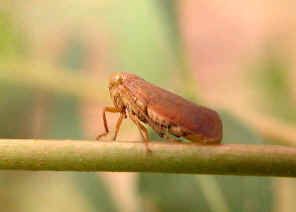
-
- Those young nymphs were found on the same small tree. Their body colour were quite
different with the adults..
-
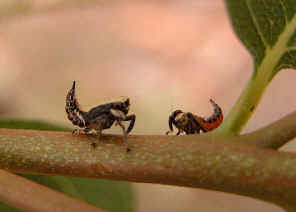
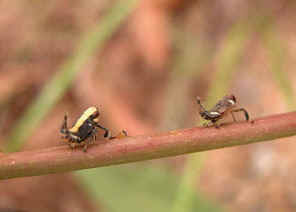
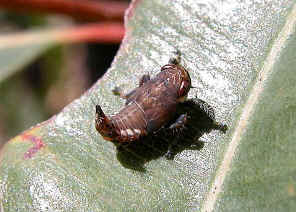 - Leafhopper nymphs, body length 8mm
-
- The body colours of the Brown Leafhopper nymphs are quite different from
their adults. Their colours are even different in different instars stages.
-
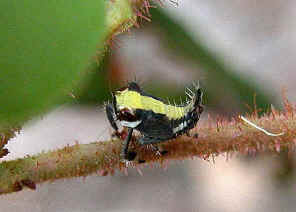 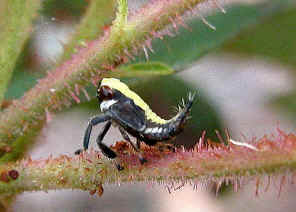 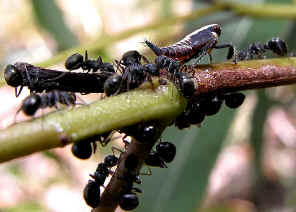 -
- From its wing buds, we believed this was a last instars leafhopper. Its body
was black in colour, with a wide yellow line on its back and white spots under
eyes and abdomen. Pictures were taken in Karawatha Forest during early summer.
-
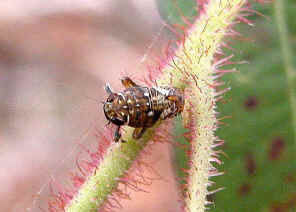 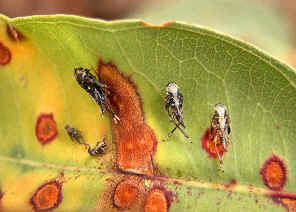
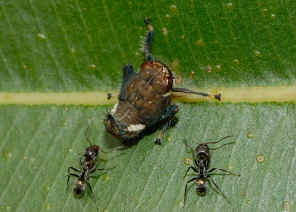 -
- There was one dry curl leaf on the plant. We opened the leaf (above 2nd
pictures) and found many leafhopper empty shells on the leaf. We believed this could be the secret place
that those leafhoppers do the moulting.
-
-
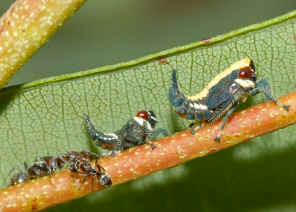
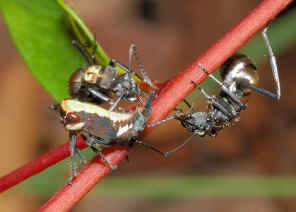
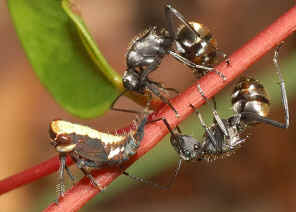
-
Jumping Spider Mimicry
- In early summer Oct 2007, we found this planthopper nymph. We
noticed that the nymph has the pattern on it face look like a jumping
spider's face. We believed that it is another example of Jumping
spider face Mimicry (check this page
for another example).
-
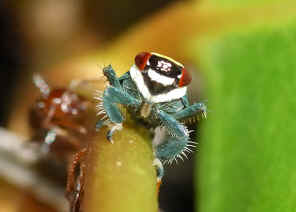
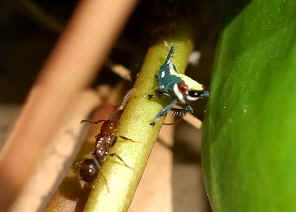
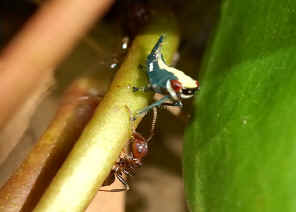 -
- When we first saw this planthopper face to face, we did think it was a
jumping spider. After the planthopper moved, we looked at it at the side
view, it nothing looked like a jumping spider.
-
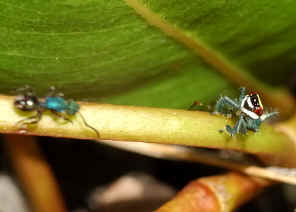
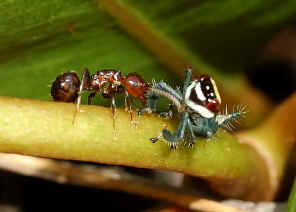
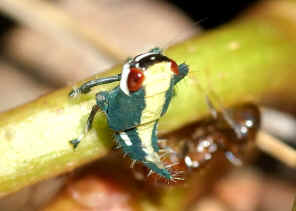 -
- Unlike the planthopper we mentioned above, never turn sideway to avoid
give away its identity, this planthopper nymph did turn around to any
direction when disturbed. But we notice that when this nymph rested, it
rested at the V-shaped gap formed by the stem and a leaf. So its back was
well protected and unseen.
-
-
-
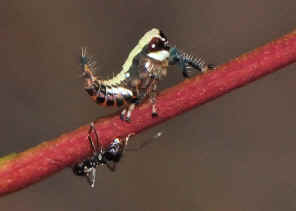
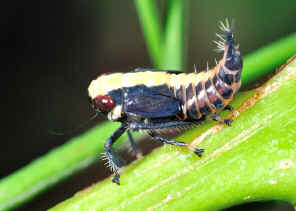
-
- We also notice that they were attended by at least two different small
ants species. This indicated that those small ants are not the targets of
the mimicry. Small ants' vision may not good enough to see their face
anyway. Possibly the good vision Jumping Spiders, the larger
ants and the vertebrate predators are the targets.
-
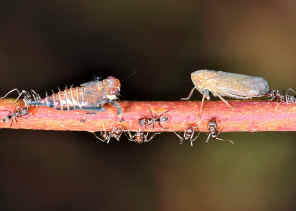
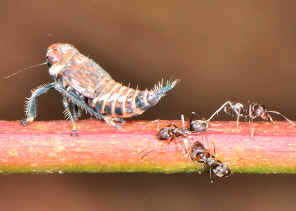
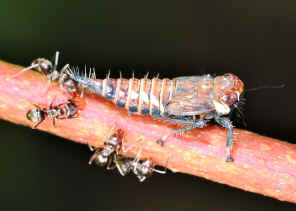 -
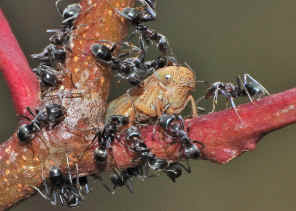 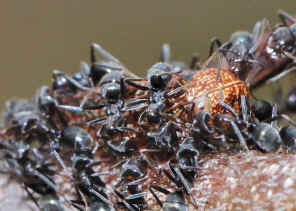
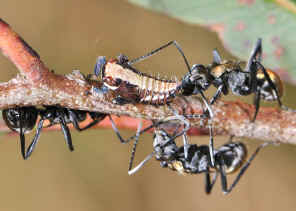 -
The Host Plant
- Smudgee
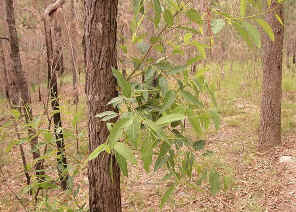 - Angophora woodsiana, family Myrtaceae
-
- The tree with fine shortly fibrous "peppermint" bark. It has
opposite leaves which distinguish it from Eucalyptus species. This
tree is common in Brisbane Eucalyptus Forest.
-
- Reference:
- 1. Alotartessus iambe
-
Fletcher, M.J. and Larivière, M.-C. (2001 and updates).
- 2. Species
Alotartessus iambe (Kirkaldy, 1907) - Australian Biological Resources Study, Department of the Environment and
Heritage.
-
Back to top
[ Up ] [ Yellow-headed Leafhopper ] [ Brown Leafhopper ] [ Red-eyed Brown Leafhopper ] [ Purple Leafhopper ]
| |
|



































